What can you do with math (except teach)?
Posted by: Gary Ernest Davis on: May 5, 2012
That’s a good question.
Let’s see – here’s what a few folks have done:

Jim McElwaine is – wait for it – an avalanche researcher.
No kidding, Jim actually researches the mathematics and physics of avalanches.
He was one of a team that investigated the 1999 avalanche that killed 12 people in the Swiss alps. You can read about Jim’s career here.
Sandy Black is a fashion designer.
Sandy works with textiles and knitwear, where she uses her mathematical skills.
She is Professor of Fashion and Textile Design at the London College of Fashion, and Director of the Centre for Fashion Science. You can read more about Sandy here.
Tanya Morton is an application engineering manager at MathWorks, a company that produces MATLAB and Simulink software for scientific and engineering computing.
Her modeling applications include the effect of weather on demand for food in supermarkets, drug discovery and impact of drugs on the heart, modeling the speed of Formula 1 cars to improve lap times; and financial modeling to develop new economic indices. You can read more about Tanya here.
Matt Parker is a  mathematics communicator and stand-up mathematician. Matt’s job is to get people excited about mathematics.
He goes into schools to give mathematics talks and run workshops with students. He also runs training for teachers, university students and academics to do his job for him: to put himself out of work.
Matt  writes and speaks about mathematics  through radio and newspapers, and is also a stand-up comedian. You can read more about Matt and his activities here.
Virginia Pearcy is an attorney with the international law firm of Orrick, Herrington & Sutcliffe LLP.
She counsels clients on protection and utilization of intellectual property rights.
Virginia’s advice regarding mathematics is this: “A mathematics education is a strong foundation for just about any professional career. It provides a challenging curriculum and helps one develop analytical reasoning skills that can be used in many different subject matter areas.” You can read more about Virginia’s law career here.
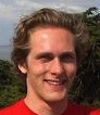
 Bjorn Roche started his own music software company, XO Audio LLC in 2004. His XO Wave software is used for music recording, editing and mixing.
Bjorn Roche started his own music software company, XO Audio LLC in 2004. His XO Wave software is used for music recording, editing and mixing.
Bjorn says about his mathematical training: “I use my intuition about math, sound and computer programming to decide how to try tackling a problem. After drawing a few diagrams, and making notes, most of the work becomes programming work, and then listening carefully to make sure it sounds right.” You can read more about Bjorn here.
This is a small sample of the many and varied careers of people whose training was in mathematics.
You can read many more stories like these at the following links:
- American Mathematical Society Early Career Profile Network
- American Statistical Association Career Center
- Mathematical Association of America Career Profiles
- Maths Careers UK career profiles
- + plus magazine’s Careers with Maths
Enjoy! And remember – being a mathematics teacher can also be a great and rewarding career.

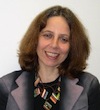

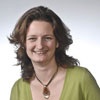

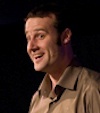
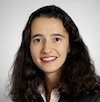

June 13, 2012 at 3:10 pm
This former engineer, now high school math teacher is bookmarking this! The #1 question in a math classroom???? When will I EVER use THIS in “real life?” I’m always looking for good examples to throw back at them!